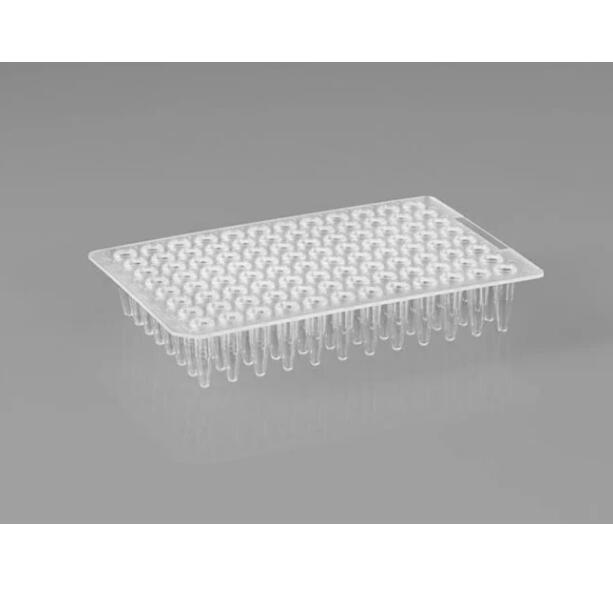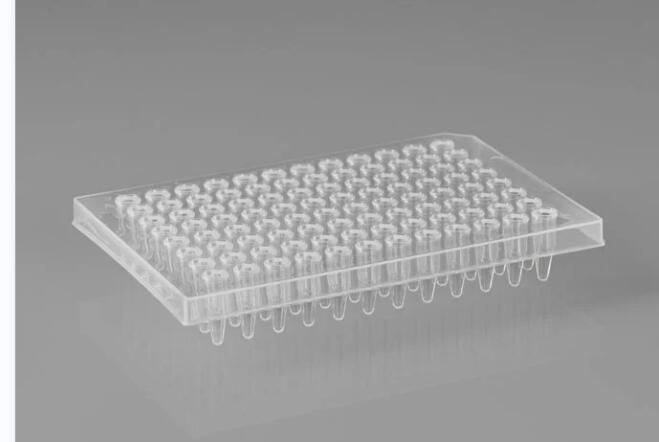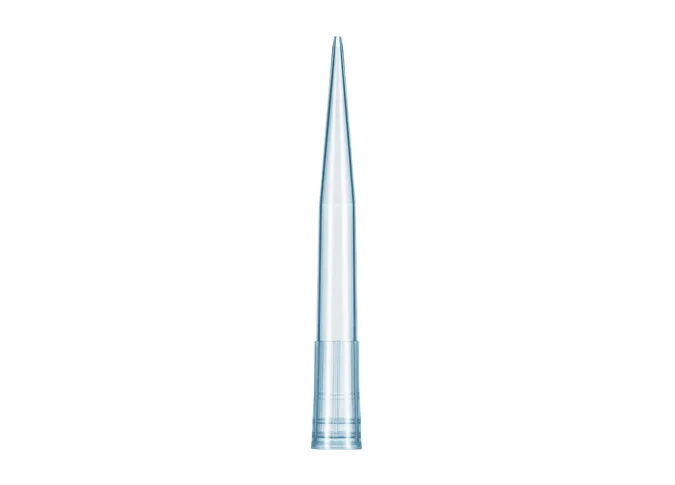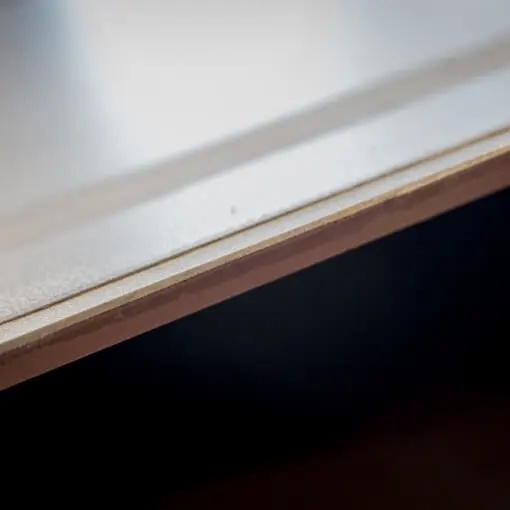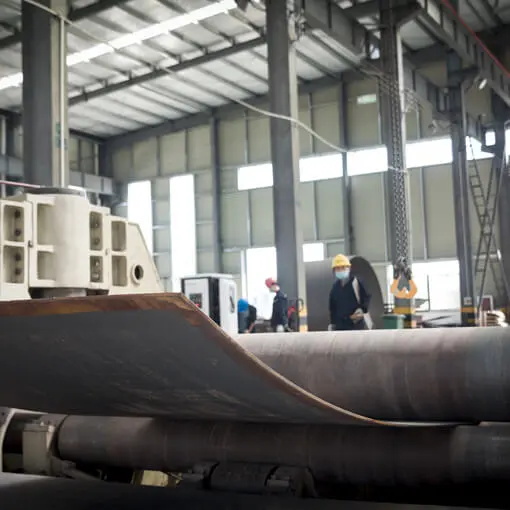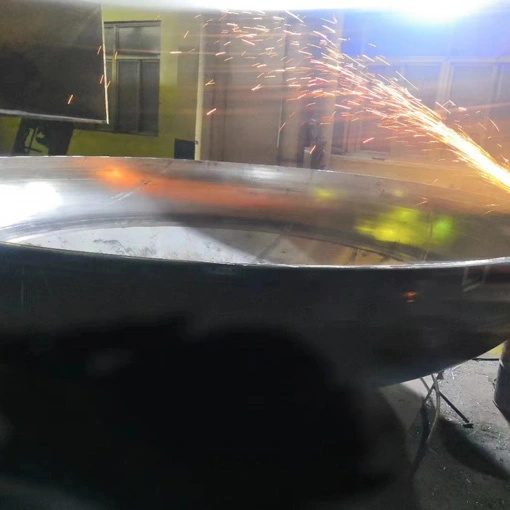PakGent 40ul 384-Well PCR Plate


PCR Tubes with 40ul 384-Well PCR Plate are a type of labware used in PCR. The PCR tubes are manufactured from high-quality polypropylene and are designed to fit into a 384-well PCR plate. Each tube has a total capacity of 40ul and a lid that screws on and off for easy sample access. The qpcr 384 well plate provides an optimal reaction chamber for the PCR process, allowing for uniform and efficient amplification. The PCR tubes are compatible with most automated thermal cyclers and can be used for a variety of PCR applications such as genotyping, gene expression, and DNA sequencing.
Parameter of 40ul 384-Well PCR Plate
Part No. Description Package Size/Case CBM/Case GW/Case (kg)
PCRP-40FS-384C 40ul 384-well, white base, clear wells 10pcs/box, 10box/case 47*29*14cm 0.0191 2.63
PCRP-40FS-384C-W 40ul 384-well, white base, white wells 10pcs/box, 10box/case 47*29*14cm 0.0191 1.55
For more PakGentPCR consumables, inquire now!
Improving PCR Efficiency in 384-Well Plates
1. Use smaller reaction volumes: Using smaller reaction volumes in 384-well plates can improve PCR efficiency by increasing the reaction surface area and reducing the amount of reagents used. This can also reduce the risk of contamination due to the smaller reaction volumes.
2. Minimize the distance between the reaction and the thermal cycler block: Increasing the distance between the reaction and the thermal cycler block can reduce the time needed to reach the desired temperature and therefore improve PCR efficiency.
3. Use optimized reaction conditions: Optimizing the reaction conditions, such as the amount of primer and template, the concentration of MgCl2 and the reaction temperature, can improve the PCR efficiency in 384-well plates.
4. Use pre-dispensed reagents: Pre-dispensing the PCR reagents into the wells of the 384-well plate can reduce the risk of contamination and improve the efficiency of the PCR reaction.
5. Use high-quality reagents: Using high-quality reagents can improve the efficiency of the PCR reaction by reducing the risk of contamination and ensuring that the reaction conditions are optimal.
6. Use improved thermal cyclers: Using improved thermal cyclers with a faster ramping rate and a more accurate temperature control can improve the efficiency of the PCR reaction in 384-well plates.
Troubleshooting Guide for PCR Amplification Issues with the 40ul 384-Well PCR Plate
1. No amplification signal:
- Verify thermal cycler settings, PCR reagents, and proper sealing of the PCR plate.
- Adjust annealing temperature and extension time if needed.
2. Weak or low amplification signal:
- Check DNA quality and concentration.
- Optimize primer concentration and design.
- Increase the cycling cycles.
3. Non-specific amplification:
- Optimize annealing temperature and primer design.
- Consider touchdown or nested PCR protocols.
- Check for contamination in PCR reagents.
4. Noisy background or smearing:
- Ensure DNA template, primers, and PCR reagents are contamination-free.
- Optimize PCR conditions.
- Maintain a clean workspace.
5. Incomplete or partial amplification:
- Check DNA template quality and concentration.
- Verify primer specificity and adjust PCR conditions.
- Consider using more efficient DNA polymerase or enhancers.
If issues persist, consult technical support or the PakGent's troubleshooting guide.
Features and Benefits of the PakGent 40ul 384-Well PCR Plate
The PakGent 40ul 384-Well PCR Plate is a high-quality labware designed for PCR applications. Its features include a durable polypropylene construction, accurate 40ul capacity per tube, compatibility with 384-well plate format, screw lids for easy access, uniform amplification, versatility for various PCR applications, compatibility with automated thermal cyclers, quality assurance, convenient storage, and cost-effectiveness in high-throughput workflows.
40ul 384-Well PCR Plate FAQs
01
Can these PCR tubes be used for qPCR?
Yes, these 384-Well PCR Plate tubes can be used for quantitative PCR (qPCR) applications. They are designed to withstand the thermal cycling and fluorescence detection requirements of qPCR assays.
02
What material are these PCR tubes made from?
These PCR tubes are made from high-quality polypropylene, which is a durable and chemically resistant material commonly used in laboratory applications.
03
Are these PCR tubes compatible with automated thermal cyclers?
Yes, these PCR tubes are designed to be compatible with most automated thermal cyclers commonly used in laboratories, allowing for seamless integration into automated PCR workflows.
04
Can the PCR tubes be easily labeled for sample identification?
Yes, these pcr 384 well plate tubes usually have flat sides or frosted areas that allow for easy labeling using markers or labels, ensuring proper identification of samples during PCR experiments.
Product Certification
Factory Pictures
Other supplier products
All supplier products
Same products









